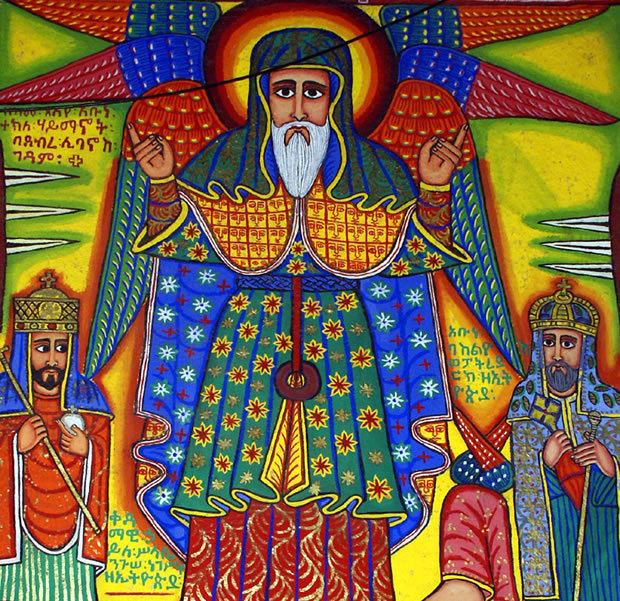Kumasi was ruled by the Oyoko, one of the most prominent tribes among the Akan. As described in the episode, Akan tribes are a somewhat confusing system. Akan tribes are essentially important extended noble families. While each tribe was usually based primarily in a specific ethnic group, they also occassionally transcended ethnicity. One tribe, the Ekuona, has most of its members among the Fante, but also featured cadet branches among the Ashanti, Denkyira, and other Akan ethnic groups.
 |
| The Eagles Talons: Akan symbol for the Oyoko Tribe, which claims the falcon as its sacred animal. |
The Oyoko tribe, itself an offshoot of the Ekuona, rose to prominence by becoming the rulers of the most important city among the Ashanti. Asantemanso, while a small village today, was once a major urban center. Along with the cities of Mampong, Juaben, and Bekwai, the Oyoko kings of Asantemanso acted as the most important powers among the Ashanti.
However, the history of the Oyoko clan forever changed during the rule of a king named Oti Akenten. Akenten, under the advice of his religious advisor Anokye, made the decision to move his capital city away from Asantemanso. This was, depending on which historians you believe, either to move the Oyoko capital further away from their Denkyira overlords, or to prevent overcrowding in Asantemanso. According to legend, Anokye decided to test the soil fertility of several cities to find the best candidate for a new capital. He planted a sapling of a kum (wild fig) tree in each city and waited to see which soil would produce the largest, healthiest specimen. The small village of Kwaaman produced the best tree, Akenten moved his capital there. Kwaaman's name would be changed to Kumasi, Twi for "City under the Kum Tree."
| A kum tree, the species used by Anokye to test the soil of various locations. |
After Akenten's eventual death, rule of Kumasi, and informally of the Oyoko, was passed onto his maternal nephew, Obiri Yeboa. Yeboa's rule, however, was one overwhelmingly consumed by chaos. During his rule, the Ashanti states were invaded by the invading Dormaa people from the West, with their armies reaching to the outskirts of Kumasi. Yeboa, to face this threat, organized an alliance between Kumasi and the other major Ashanti cities. This alliance met the Dormaa in battle, and emerged victorious, but at the cost of Yeboa's life. He succumbed to battle wounds shortly after the fight. In his place, his own nephew, Kofi Osei Tutu was meant to take the throne. However, the circumstances surrounding Osei Tutu at the time of his uncle's death made the succession of the throne of Kumasi a little more complicated.
Osei Tutu, like many important heirs of Denkyira subjects, had been held hostage in the Denkyira capital of Abankeseso since the beginning of his adulthood. This was not unusual, as the Denkyira had a long-standing practice of holding the heirs to their subordinate kings as hostage to ensure compliance. However, while he was a captive, Osei Tutu was no prisoner in the traditional sense. Political prisoners like the Oyoko prince were treated with intense respect, thus they have a positive view of the Denkyira when they are eventually released. So, rather than being locked in a dungeon, Osei Tutu was essentially a guest in the Denkyirahene's palace, albeit one that wasn't allowed to leave. His days were spent idly socializing with Denkyira elites, playing Oware, and courting palace women.
 |
| Oware, a strategy game similar to mancala, has been a mainstay Akan leisure hobby for centuries. |
However, this last activity would eventually land Osei Tutu in some trouble. According to oral traditions of both the Ashanti and Denkyira, Osei Tutu got a little bit too close with the Denkyirahene's daughter, and got her pregnant. Fearing repercussions for this relationship, Osei Tutu was forced to make a daring escape from Abankeseso. However, he couldn't stay in Kumasi, as his uncle was still a Denkyira subject. So, he fled into Akwamu, a neighboring kingdom to the East. There, he remained under the protection of the Akwamuhene, with the king refusing to give up Osei Tutu due to his enmity with the Denkyirahene as well as his own friendship with the Oyoko fetish priest Anokye. So, for the next few years, Osei Tutu hid out in the Akwamu capital. However, when he heard the news of his uncle's death at the hands of the Dormaa, Osei Tutu was forced to return to his home city of Kumasi to take up the mantle of Asantehene. With a small group of Akwamu bodyguards, Osei Tutu made his way back to Kumasi. And that is where our story leaves off for now.
Apologies for changes in background noise and the like during this episode. I recently moved into a new place, so things might be a little bit different. Anyways, thanks for listening.














